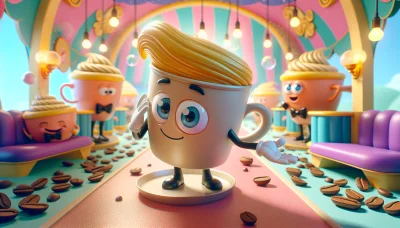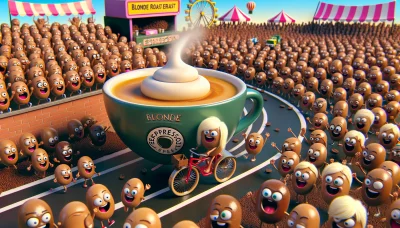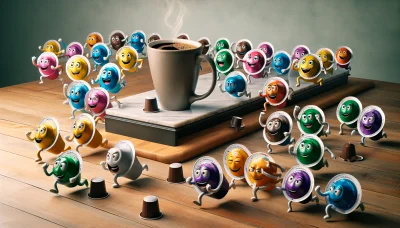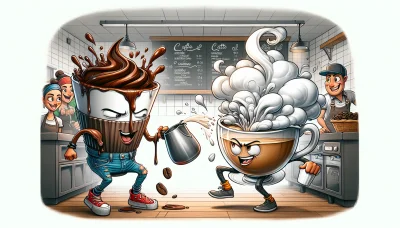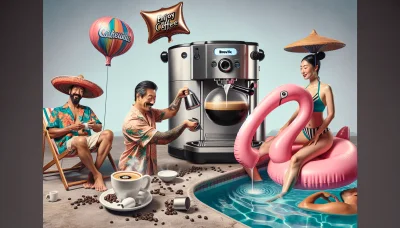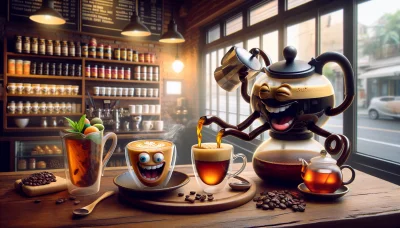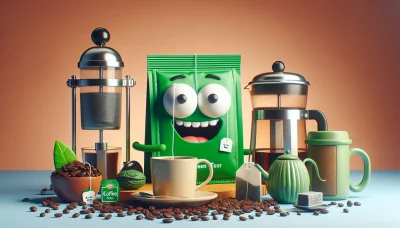Effective Steps to Achieve Your Brewing Goals Quiz
Test Your Knowledge
Question of
Effective Steps to Achieve Your Brewing Goals
This article is dedicated to all tea and coffee enthusiasts looking to elevate their brewing game. Whether you're a beginner eager to learn the basics or an experienced brewer aiming to refine your skills, we've got you covered. We'll explore various brewing techniques, from the traditional to the modern, and discuss the importance of choosing the right equipment. Additionally, we'll delve into the selection of tea leaves and coffee beans, providing tips on how to identify quality products that suit your taste preferences. Join us as we embark on a journey to achieve the perfect cup, enhancing your brewing experience one step at a time.
Understanding Your Brewing Goals
When embarking on your journey into tea or coffee brewing, one of the first steps should be to define what you hope to achieve. Whether your interest lies in mastering the art of espresso, perfecting your pour-over technique, or exploring the vast world of tea varieties, having clear brewing goals can significantly enhance your experience. It's not just about the end product but understanding the nuances of different brewing methods, the characteristics of various beans and leaves, and how slight variations in temperature or timing can dramatically alter your beverage. This knowledge not only allows you to enjoy your daily cup more fully but also equips you with the skills to experiment and innovate, potentially leading you to create your unique blends or signature drinks. Moreover, clear goals can guide your purchases of brewing equipment and related products, ensuring that you invest in tools that align with your ambitions and contribute to achieving the desired outcomes in your brewing adventure.
Choosing the Right Equipment
When it comes to brewing the perfect cup of tea or coffee, the importance of selecting the right equipment cannot be overstated. The choice of brewing equipment, whether it be a teapot, French press, espresso machine, or any other device, plays a pivotal role in extracting the full flavor and aroma from your tea leaves or coffee beans. Each brewing method has its unique characteristics and can significantly affect the taste, strength, and quality of your brew. Therefore, understanding the nuances of different brewing equipment and how they align with your personal preferences and the type of tea or coffee you enjoy is essential in achieving that perfect cup.
Selecting the Best Ingredients
When it comes to brewing the perfect cup of tea or coffee, the importance of choosing high-quality ingredients cannot be overstated. The selection of premium tea leaves or coffee beans is the cornerstone of any great brew. These ingredients not only influence the aroma and flavor profile of your beverage but also impact its health benefits and your overall drinking experience. High-quality ingredients ensure that each sip delivers the richness and depth of flavor that enthusiasts seek. Moreover, investing in superior tea leaves and coffee beans supports sustainable farming practices, contributing to the well-being of the environment and the communities involved in their cultivation. Thus, selecting the best ingredients is not just about taste—it's about embracing a culture of excellence and mindfulness towards the planet and its inhabitants.
Mastering the Brewing Techniques
Brewing the perfect cup of tea or coffee is an art that has been refined over centuries, incorporating a variety of techniques that cater to the diverse tastes and preferences of drinkers worldwide. For tea enthusiasts, the method varies significantly depending on the type of tea. For example, green teas often require cooler water temperatures and shorter steeping times to preserve their delicate flavors, while black teas can be brewed with boiling water to extract their full, robust taste. Oolong teas fall somewhere in between, with a preference for slightly cooler water and variable steeping times based on personal taste.
Coffee brewing, on the other hand, offers its own array of techniques, each producing a distinct flavor profile. The French Press method allows for a full-bodied coffee by steeping coarse grounds in boiling water before pressing down the plunger to separate them. Espresso, a highly concentrated coffee, is made by forcing a small amount of nearly boiling water through finely-ground coffee beans, resulting in a strong shot of coffee. The pour-over method involves pouring hot water over coffee grounds in a filter, providing a clean and flavorful cup of coffee that highlights the unique characteristics of the coffee bean. Additionally, cold brew coffee, made by steeping coffee grounds in cold water for an extended period, offers a smoother, less acidic coffee experience.
Regardless of your preference, exploring these brewing techniques can enhance your appreciation for tea and coffee, allowing you to discover new flavors and styles that suit your palate. Moreover, experimenting with related products like different tea leaves, coffee beans, and brewing equipment can further enrich your brewing journey, leading to the perfect cup every time.
Experiment and Refine
Exploring the art of tea or coffee brewing is a journey of discovery, where experimentation and refinement play crucial roles. Each variety of tea leaf or coffee bean brings its unique flavor profile, which can be enhanced or altered through different brewing techniques. Whether it's adjusting the water temperature, experimenting with brewing times, or trying out various equipment, each step offers an opportunity to fine-tune the process. By embracing a spirit of experimentation, enthusiasts can unlock new dimensions of taste and aroma, leading to a more personalized and satisfying experience. As preferences evolve, so too should the approach to brewing, making the act of refining an ongoing process. This pursuit of the perfect cup encourages continuous learning and growth, ensuring that each sip is a testament to the dedication and passion invested in the craft.
Common Mistakes to Avoid
- Using water that is too hot or too cold, which can lead to over-extraction or under-extraction of flavors.
- Not measuring the tea or coffee properly, resulting in a brew that is either too strong or too weak.
- Ignoring the recommended steeping or brewing time, causing the drink to become bitter or flat.
- Storing tea leaves or coffee beans improperly, leading to loss of flavor and freshness.
- Using low-quality water, which can affect the overall taste of the tea or coffee.
- Overlooking the importance of cleaning the brewing equipment, which can introduce off-flavors into your brew.
- Not pre-wetting paper filters, which can contribute a papery taste to the final product.
- Grinding coffee beans too early before brewing, which can lead to oxidation and loss of flavor.
- Ignoring the importance of the grind size, which should be adjusted based on the brewing method.
- Failing to experiment with different brewing times, temperatures, and ratios to find the perfect brew for your taste.
Summary
| Steps to Achieve Brewing Goals | Common Mistakes to Avoid | Tips for Success |
|---|---|---|
| 1. Select quality tea or coffee beans. | Using stale or low-quality beans. | Invest in high-quality, fresh beans or tea leaves. |
| 2. Use the correct water temperature. | Overheating or underheating water. | Use a thermometer or an electric kettle with temperature settings. |
| 3. Measure the right amount of coffee or tea. | Incorrect ratios of water to tea/coffee. | Follow brewing guidelines for specific types of tea or coffee. |
| 4. Pre-rinse paper filters (if using). | Skipping the filter rinse, affecting taste. | Rinse filters to remove paper taste and warm up the brewer. |
| 5. Allow proper steeping or brewing time. | Rushing the brew process. | Patience is key; use a timer to ensure consistent results. |
| 6. Clean your equipment regularly. | Neglecting equipment maintenance. | Regular cleaning prevents old residues from affecting flavor. |

